Disclaimer: this is a personal website. All views and information presented herein are my own and do not represent the views of the Fulbright Program or the U.S. Department of State.
I’ve been given the most amazing experience I could ever have dreamed. And it has been wonderful. But as with any transition to a new culture, it isn’t always easy. There are hiccups, embarrassing moments, and cultural misunderstandings. I’ve definitely cried into a jar of Nutella. But that’s all a part of the journey. I won’t grow if I don’t encounter obstacles.
The following are the seven things that I’ve learned the hard way in the first month of living in Wellington, New Zealand. Some are small, some are big. Some might be funny, others more serious. But all will contribute to my growth. I can’t wait to walk away from this experience a more confident, mature, and culturally competent woman when I step on that plane back to my homeland.
- Snapper cards
Bus rides took me a bit to figure out. You use a bus card (called a Snapper card) to tap against a machine when you get on and then you tap off it when you exit (they call it tag on/tag off). You then get charged by how long you ride, similar to the zoning on the London Tube station.
The first time I rode the bus, I happened to sit behind a college-aged student who was explaining to her parents that you had to tag off or you would get a fine. Oh. I thought. I would never have thought to do that.
But even with her helpful advice, I just can’t seem to get into the habit of tagging off. Once, when my flatmate Tricia and I were riding to the Karori campus, I slipped my Snapper card into my wallet and stuffed it in my coat pocket. When we got to our stop, I hopped off without even thinking about my Snapper card. I looked back to see what was taking Tricia so long, and my eyes bugged out of my head when I saw her taking the time to tag off. In panic, I fumbled my hand into my pocket in an attempt to retrieve my Snapper card, but by the time my fingertips felt the red plastic, the bus was happily pulling away.
A few days later when I rode the bus again for the first time since my mistake, the tag on/tag off machine shouted for all to hear, “Penalty applied.” So not only did I get the full cash fare fine for not tagging off, but I also had everyone in the whole bus hear my transgression. If kiwis had judging eyes, I’m sure I would have felt them on me as I walked down the bus aisle to an open seat. Now, whenever Tricia or I forget to tag off, we will call the next bus ride experience the “walk of shame.” As in, “oh man, I really hope there aren’t many people on this bus because I have to do a walk of shame today.”
I’ve now taken to holding my Snapper card in my hand within my line of vision so that I do not forget to tag off. However, last week, there was a spout of warm sunshine that sparkled out of nowhere. I felt like an audience member on an “Oprah’s Favorite Things” show. Soon, I found myself stripping off my winter coat, feeling pleasantly and unusually warm. As I daydreamed out the window at the beautiful hills rolling outside, I suddenly snapped to reality in the tranquil bus and realized we had reached my stop.
Jumping up, I went to tap my Snapper card against the machine and realized that I had somehow wrapped my scarf around the hand that held it. In panic, I tried to use my semi-free hand to untwist the scarf free, but my effort was made difficult by the fact I was juggling my lunch box and laptop case. It seemed that the harder I tried, the more I couldn’t get my hand free. A couple of people in the back of the bus started giggling at my obvious frustration that I couldn’t find my hand. Finally, I waved at the bus driver to go to the next stop so I could calm myself enough to figure out how to free my hand. He shook his head at me, letting me know he would wait. I took a deep breath, figured out that I had somehow created a knot around my hand in my panic, unknotted and wrestled it lose, tagged my card, and walked out into the now, suddenly misting Wellington air. Man.
Lesson I learned: get the mini Snapper card that you can attach to your key chain. And laugh at yourself when your hand gets eaten by a piece of cloth.
- Mold
Mold is now my greatest enemy. My mouth fills with venom whenever I think of it.
When I first arrived, I lived with or Axford fellow Ben before he moved on to travel the world. Those first couple of days before he left, I noticed that he always had the curtains open and would even go so far as open the windows. Who is this guy? I would think to myself as I shuddered in the winter wind. He must be Wolverine.
After he left, I shut the windows and closed the curtains to try to keep the fleeting summer rays trapped inside each room. But one day when I set my laptop back down and opened my bedroom door, I was slammed in the face with a putrid smell. Mold!
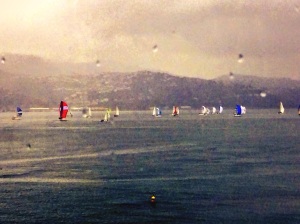
Even though the weather is sometimes cold and windy, Wellingtonians will still brave the weather to sail. Amazing!
I opened the curtains to see that there were tiny black spots dancing along the edges of two of the curtains. I clutched my chest thinking that I was surely dying of a black lung. I did what many people do of my generation: I jumped online and googled the harmful side effects of mold on the human body. After reading about the various neurological and respiratory diseases that can come from mold, I had to leave my apartment to gulp the fresh Cook Strait air.
Later that day, I met up with my new friend Max, and I very dramatically told him about my mold infestation. Now, I know I was being melodramatic–I mean, I understand that having a few spots of mold on a curtain does not equal a spore takeover–but I had assumed that I’d get more than a “meh” from Max. But that is really all I got–a noncommittal, so-what-“meh.” Apparently, mold is just a “thing” in New Zealand. Because it is so cold and damp here and most don’t heat or insulate their houses (and many houses in the valley are in the shade), mold is just kinda an everyday problem here.
Max taught me that I have to open my curtains each day to let the sunlight in and that I should crack the windows during the day and shut them at night. So that “strange behavior” I noted when I first arrived is actually quite normal behavior in New Zealand. In fact, there are whole documents that give you tips on how to prevent mold. And when you talk about mold with New Zealanders, they’ll just look at you blankly like, “so what?” It’s just part of life here.
The good news is that I won’t die of a black lung while in New Zealand. After talking with our landlord, we discovered that the mold on the curtains already existed. We are lucky in that we are located in a place that gets sun all day long (when it’s sunny), so we rarely even think about the mold anymore. The place where we actually do have a heater–although it took me a week to discover it–is in the bathroom, so we don’t have to worry about the moisture there.
Even so, Tricia and I have been super paranoid about mold. If there is anything slightly dark on anything, we will shriek “mold” and shake our fists to the sky. Most of the time, it’s just a crumb or a sequin. But just today, Tricia washed her water bottle and left it out to dry in the morning. By the time we arrived home to cook dinner, our most hated enemy had found its way inside because grey clouds had blanketed the sky. Curses!
Lesson I learned: Read about a country’s climate before arriving in said country.
- Paying for food
I’ve been lucky in that when I first arrived, I had some American Fulbrighters who’d lived in the country for seven months and were happy to show me the proverbial ropes. I would follow whatever invisible rules they followed whenever I was with them. But in my jetlag haze, some I didn’t quite pick up. Like how to pay for food.
In the US, unless you are at a fast food chain, the server will bring you your check once you finish your meal. Most of the time you ask for it, but sometimes he’ll just plop it on your table with a “pay when you’re ready.” You’ll put your credit card or cash in the black billfold, and he will take it, disappear, and come back with the receipt for you to sign (or your change). Then you’ll add your tip, give your John Hancock, and tip your hat on your way out.
Here, when you finish with your pie or fish and chips, you’ll just stand up and head to the register. They’ll ask you what you ordered, you tell them, and you pay that exact amount. No tip. No asking for bills. It’s kinda nice actually, but if you don’t know that’s what you do, you’ll get confused looks when you ask for the bill.
The same goes for water. It really is “serve yourself” in this respect. Either they’ll give you a water jug and glasses, or you run up to the front and get them yourself. I like it because you can pour agua to your heart’s content, without having to wait for the stressed out busser or server to fill you up. The camel inside me thanks thee.
Lesson I learned: don’t be shy to ask how things work in a country. And pay attention to what those around you do.
- Politeness/kindness
People in New Zealand are very, very polite. In general, I find them to be some of the most genuinely kind people I’ve ever met. Just yesterday, I e-mailed a total stranger–a friend of someone I’ve haven’t actually yet met in the virtual world–and asked him if I could talk to him about the New Zealand education system (he’d been in education for 50 years). He called me pretty much immediately, and said that he and his wife would come pick me up and bring me over to their house for dinner. And he has never met me. I just don’t know of many people in the States that would pick up a total stranger and bring her home without the party in common knowing that person well.
But that’s just the general kindness and hospitality I’ve found here. I’ve had the pleasure of meeting some amazing teachers–and all have offered me to stay overnight, come over for dinner, go out to eat, or do activities. It’s amazing to me how everyone has made me feel so at home. And in the U.S., you’d typically have to have known the person a while before you invite them over, but here the invitation for dinner is usually given on the first meeting. Amazing!
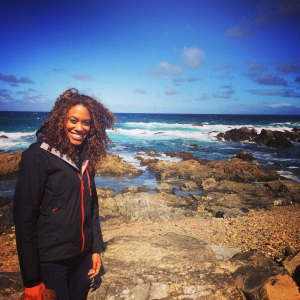
Occasionally there is AMAZING sparkling weather in Wellington, and then no city can light a candle to the beautiful city.
But how could this be “something you learned the hard way?” you ask? Well, because there is, bewilderingly, a downside. In my experiences so far, the nature of being polite or kind can get in the way of interpreting how kiwis actually feel. For example, a kiwi took me to a place that served food that I mentioned I liked. But it wasn’t until a couple of weeks later (and some more bonding) that it came out that the kiwi would never usually eat that food. He (or she) was just being kind. In another instance, my supportive and nurturing advisor invited me to a movie about the true story of a Maori hero, Genesis Potini, after a grey day of home-sickness. I ended up declining, but after a few days when I felt back to normal, I asked her if she’d like to see it. It was only then that she mentioned it because I was so homesick, but the movie was actually too violent for her to see.
The biggest challenge has been with my project. Everyone who has helped me on the project has been nothing but kind, but it took me two whole weeks before I finally caught on that I would have to greatly revise my original project because it went against some big cultural norms and therefore wouldn’t work in the New Zealand context. I’m not sad about having to change my project–in fact, I’m quite giddily excited about my new project–but I am exasperated that it took so long for it to be communicated to me that changes needed to be made. I think that this is a case where the cultural desire to make me feel welcome was actually a wrench that set me back quite a bit from a time standpoint.
And so, I find that there is a lot of “reading between the lines” that happens in me-to-kiwi-interactions. There is no way to generalize an entire country of people, but culturally I find kiwis “generally” to not be as straightforward or as forthcoming with their thoughts and emotions as in the U.S. (i.e. in the U.S., if my project wasn’t going to work, I would have heard three weeks before I even started my project).
Because I have to read between the lines, I’ve also had to temper the way I interact with kiwis. For example, I asked a new kiwi friend if she would give me feedback about my project when it was hot off the copier. Her response was, “I think it comes off “American” – a wee bit too blunt. NZers tend to cotton-wool-wrap the ouchie parts so no one’s feeling get hurt.” So, I’ve been buying some metaphorical cotton-wool-wrap so that I can build the trust and respect needed to create the cross-cultural relationships that the Fulbright exchange was created for.
So I am slowly starting to navigate the ambiguity. I am happy to be among such genuinely kind and polite people who really want me to have a wonderful time in their country. But I think it will take me a bit longer to build the trust necessary to get more blunt criticisms, discussions, and interactions that will really help me grow and reflect on the pervasiveness of institutionalized racism in education. Please watch this space.
Lesson I learned: Not every country is as blunt as Americans are. It can be really, really frustrating interacting with cultural norms that are not easy to decipher, but as you build relationships, trust, and community, you can have inspiring and eye-opening conversations that make you see another culture’s values. And even though they might be different from your own, they are amazing in their own right.
- Garbage
The garbage collector comes once a week on your zone’s designated day. Ours is Thursday. I was told in passing that I would have to put all of the garbage in yellow official Wellington city pick up bags. The first week, I was happy to see one left behind in a cupboard, and it was fairly straight forward–put the garbage in the yellow bag, tie it up, and put the bag out in front of your apartment.
The second week, I had to go on a yellow bag hunt. I went into a grocery store, bopped around to some Backstreet Boys playing in the background, and searched for those sunshine colored rubbish bags. And I mean that I searched. I first looked logically–where the regular garbage bags are sold, then household goods, then paper supplies…but no dice.
Because I am stubborn and really want to be independent, I walked up and down each and every aisle looking for the bags. Feeling defeated, I finally decided to check out with some bread, cheese, and apples.
On my way up to the apartment, Maurice intercepted me when I had a mouthful of apple. In his hands were a New Zealand historical atlas, a New Zealand Encyclopedia, and…you guessed it, a pack of five garbage bags. I have no idea how he always seems to know what I need. After I chewed and swallowed, I told him of my voyage to try to find the bags, he exclaimed, “Oh no! You can’t find them anywhere in the store. They are behind the counter, you see. Young people used to steal them, you see. So now you have to ask for them.” Ooooh.
So I had let my pride get in the way of something I would have never have found in the first place without asking. I did later purchase my own yellow bags ($13 for 5 bags if you were wondering) but Maurice’s gift and advice meant so much.
Lesson I learned: it’s okay to ask for help.
- In Person
In the U.S., if you are reaching out to an authority figure or someone you don’t know, you almost always begin with an e-mail. You might introduce yourself, the purpose of the contact, and ask for a phone or in-person meeting.
I started off doing that here. I would e-mail professors/lecturers about about their classes (side note: do not use the term “audit” here–the profs will think they are in trouble!), e-mail contacts who are passionate about their areas of expertise, and e-mail potential partner teachers or schools. But I wouldn’t get responses back. Thinking I had done something wrong, I spoke to some of my new kiwi friends, and it was explained to me that people here prefer if you just show up at their doorstep. This is especially true in Māori culture, as it is very much believed that one should be in the here and now, and e-mail is not a communication tool that builds trust or community. Therefore, it is really important to create connections in real time.
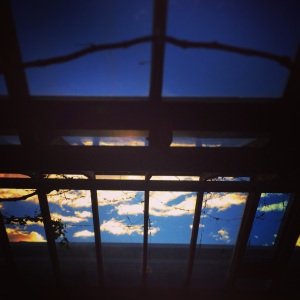
Even when things seem tough, one things is always constant: the sky. “You are the sky. Everything else – it’s just the weather.”
― Pema Chödrön
I’ve also found that kiwis don’t check their e-mail often (and in some cases not at all) on the weekends. I think of the hundreds and hundreds of e-mails I get each year from parents, students, and other faculty members, and I think there is something to be learned from getting away from the screen and getting in front of a live person. I’m going to try to carry this lesson with me when I return to the States. It’s been good for me to get outside my comfort zone, to knock on doors wearing my shy smile. Just today, I walked into a professor’s office, struck up a conversation, and walked out an hour and a half later with several contacts, an invitation to a conference, and a follow-up meeting.
Lesson I learned: just because things are the way you’re used to doing them, it doesn’t mean yours is the best way. Put the premium on building relationships and “being in the here and now.”
7. Weather
It is cold. And it is that way inside or out. As I type this in my beautiful apartment, I see the computer screen through the little slit where my winter scarf comes up to my hat. Since I’ve been here, I’ve bought four sweaters, a down vest, a coat, a scarf, and I’m currently searching for a pair of mittens. I mean, you already know this if you read my Lesson in Warmth post, but this fact about New Zealand is still something I haven’t gotten used to. And luckily people are still looking out for me in this respect. Just last weekend, I went to my first All Blacks rugby game, and Maurice came by with all of his warm clothing for me to wear.
But the dagger in my heart has been that when people ask how long I’m in their country, they will respond, “Oh, that’s too bad. You’ll miss the good weather.” Apparently, January and February are the two great months in Wellington, and January through May are the best times to live in Wellington. Drats! Why didn’t I come second semester?! I will be oh-so-close, but not quite able to imagine what this city is like in all its glory. The part that really hit me recently is that because of the structure of the American academic school year, I will probably never see a Wellington summer!
I thought about this, especially this week when the weather was menopausal–it went from sunny, to rainy, to sleeting, to hailing, to sunny, and back again in 10-15 minute intervals. As I waited in the rain underneath a bus stop awning for carpool to pick me up for school, the wind picked up, making me wish I had rocks in my boots. And I got to experience the weather phenomenon I had heard about and hoped I’d never encounter–the sideways rain. There I was in a little raincoat, a scarf, and two sweaters getting hosed by Mother Nature. As my mentor teacher stated, at least I didn’t make the amateur mistake of using an umbrella in Windy Welly.
Lesson I learned: there is no such thing as bad weather, there’s just bad clothing.
The video: After some particularly terrible weather, we saw a double rainbow on our drive home from school. My apologies, I accidentally hit “slow motion.” But hey, it’s a double rainbow in slow motion!
So those are seven things I’ve learned the hard way in the first month I’ve lived in Wellington. I’m sure there will be other toads in the roads I follow in the next three months, but I embrace these future challenges. I have already learned a lot about myself through these seven setbacks of varying difficulties, and I welcome the growth that has resulted from them. It’s through these and future obstacles that I will become a more confident, patient, and compassionate human. Keep those lessons coming, universe!
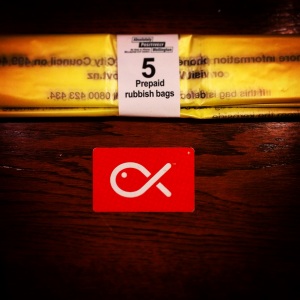
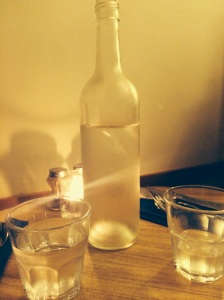
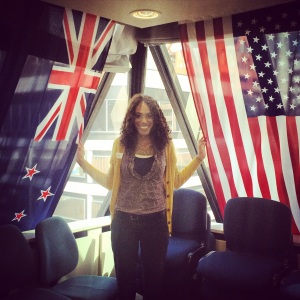

My favorite Norwegian proverb is, “Det finnes ikke dårlig vær – bare dårlige klær.” It means: There is no such thing as bad weather, just bad clothing. I spent two years in Norway (my second home) and it is very similar to NZ in many ways. I loved this post (and actually did not know all of this – learning curve doesn’t stop), but was especially happy to reach the end of nr 7 and see that lesson. Wanted to share that your discoveries reflect global wisdom 😉
LikeLike
Thanks Brenda! I really love that proverb. I am going to stash it away the next time I shudder in the wind. And thank you for all of your help–a lot of the wonderful things that are happening to me are because of your influence and help!
LikeLike
Interesting!
LikeLike
Thanks Brenda! Sending my love to you and the family!
LikeLike
This was a great read Jess. Glad you are making such progress adjusting and not feeling too homesick! It’s probably a good thing you are there in bad weather, otherwise you might never come home ha ha! And might I add that rainbow video is way creepy with the slow Mo action. Lots of love and sunshiny vibes to you!!!
LikeLike
Thanks Jen! I just looked at silly pictures of us yesterday and really missed you. And yes, the double rainbow is quite strange… Yet I’m happy that it happened because the boys in the car spent the next few minutes mocking me for how I yelled out “double rainbow!”
LikeLike
Pingback: Kiwifruits and Capstone Projects: My tips for the Fulbright Distinguished Awards in Teaching application | Ms. Stovall 313
Loved this article. Having been raised in Lower Hutt/Wellington and now living in Los Angeles for the past 37 years -I’m thinking of returning to live there. Your article is very informative for me. Also I will pass it on to my daughter (born and raised in California) but currently flatting and attending Victoria!
LikeLiked by 1 person
Thanks Julien! I loved Windy Welly, but I certainly had a learning curve. Sending love to you and your daughter!
LikeLike